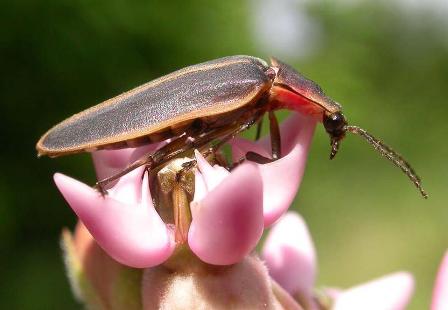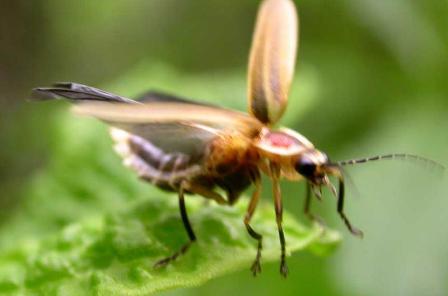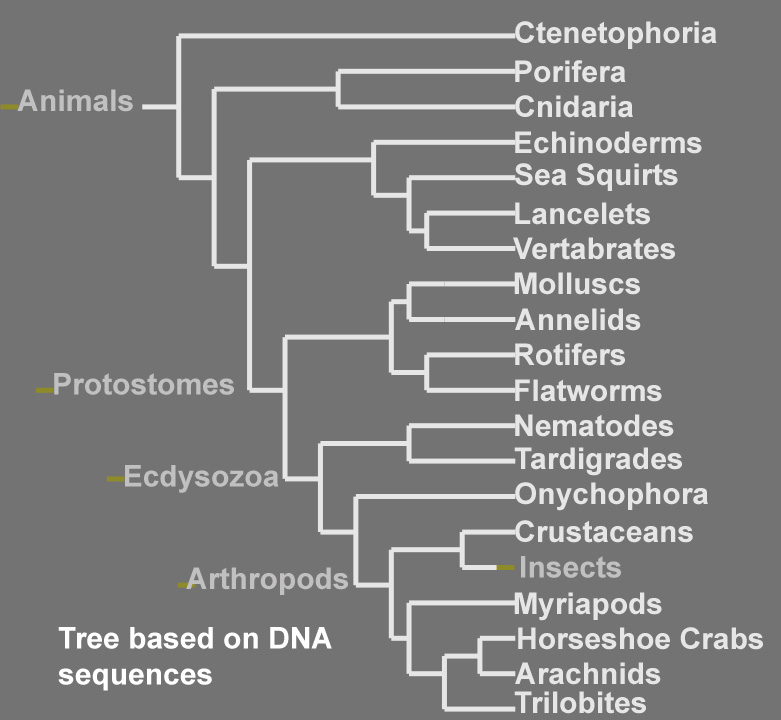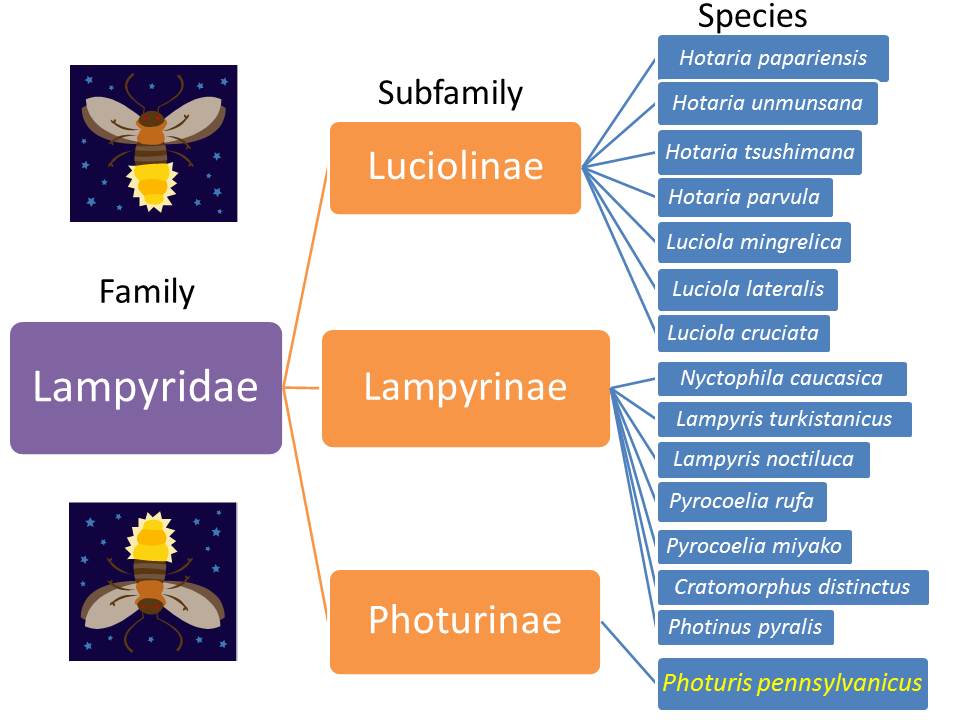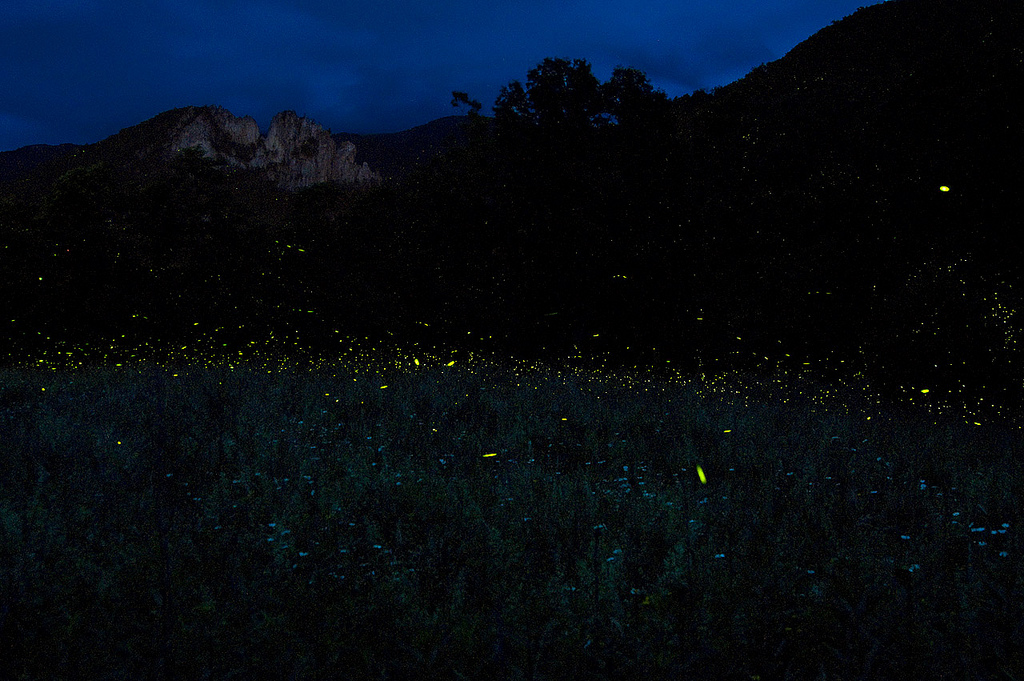
Do Kids Play Catch Over Farmer Greg's Shed?
Here's a complete classification of the Pennsylvania firefly with the listed attributes as to why it fits in that category.

Domain: Eukarya
Fireflies are multicellular, have membrane bound
organelles, undergo mitosis for cell division, and sexually
reproduce.
Kingdom: Animalia
Fireflies are multicellular, heterotrophic meaning
they require nutrients via ingestion, they don’t have cell walls and
have cells that are organized into tissues that have specific
functions.
Phylum: Arthropod
Fireflies have segmented bodies and an exoskeleton
made out of chitin. They also have compound eyes.
Class: Insect
Fireflies possess a head, thorax, and abdomen. The
walk using three pairs of legs and have 2 pairs of wings. The sexes
are separate and reproduction is sexual.
Order: Coleoptera
Fireflies are a member of the
beetles so they have elytra (hard coverings that
protect the flight wings) that meet symmetrically down the middle of
the back and the use the elytra for balance during flight. The
larvae are different in appearance than the adults.
Family: Lampyridae
Firelfies are a soft bodied beetle that is 4.5-20 mm in length.
The head is concealed above by flattened pronotum and the last
2 or 3 abdominal sterna often luminous.
Genus: Photuris
The head is often visible from above, not
completely covered by pronotum. Their legs are typically long and slender,
and the antennae are simple.
Species: Photuris pennsylvanicus
From the Greek word phot
which means light plus uri which means tail. Pennsylvanicus
is from being named Pennsylvania's state insect.
This is a taxonomic breakdown of Photuris
pennsylvanicus
from its domain to order.
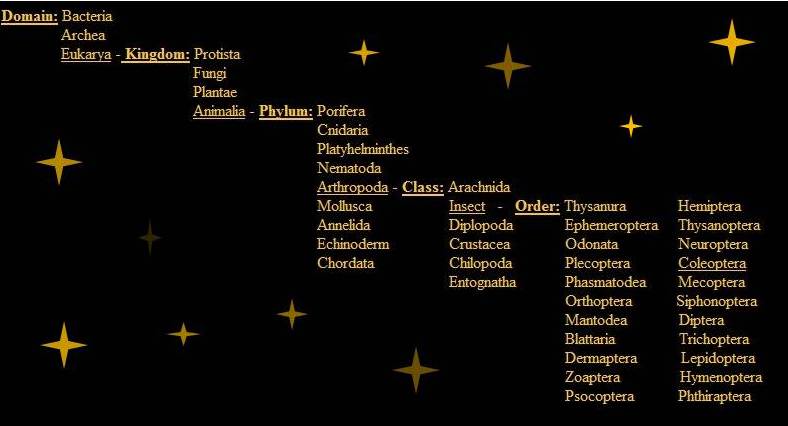
This is a further breakdown from family to species. Not all genera and species are included.
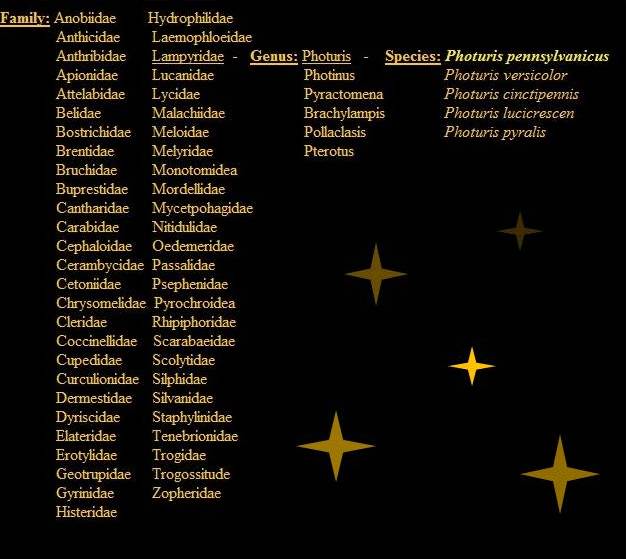
This phylogentic tree is based on DNA sequences. This shows where fireflies fit in grand scheme of things. Fireflies are located in the class of insects which are most closely related to crustaceans under the phylum of arthropods.
This is a phylogentic tree based on amino acid sequences of the Nyctophila caucasica luciferase and fifteen known beetle luciferases (luciferase is the enzyme that makes the firefly glow). By finding the amino acid sequences of the different beetles’ luciferases, they are able to show how they are related to each other in the family of Lampyridae. The subfamily of Luciolinae is the largest subfamily of fireflies. The species in this subfamily are scattered throughout Eurasia, Europe, East Asia, and Australia. They all produce light and flash rather than emit a continuous glow. Learn more about Lucioline morphology, taxonomy, and behavior by Lesley A. Ballantyne by clicking here. The subfamily of Lampyrinae is sometimes called a 'dumping ground' for fireflies that don't quite fit into other groups. The species in this subfamily usually live in more temperate northern regions of the world, while a few species are tropical. This group has both flashing and continuous glowing fireflies. The subfamily of Photurinae live in North America. Not all species in this group light up, some use pheromones instead. Note that subfamilies of Otottretinae, Mathetinae, and Pterotinae are also in the family of Lampyridae, and the subfamilies of Photurinae, Lampyrinae, and Luciolinae contain many more species than are listed.
Continue to habitat
Back to the homepage
